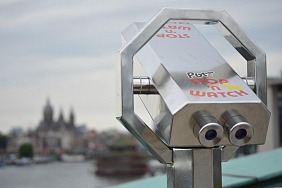Remote work has become increasingly popular in recent years, and with it comes the need to track productivity when employees work away from the office. Even if you don’t have a dedicated team of remote workers, you may still need to track their productivity in order to ensure deadlines are met and goals are achieved. Fortunately, there are a few proven techniques that can help you effectively track remote work productivity.
Set Clear Expectations
One of the first steps in tracking remote work productivity is to set clear expectations. You should outline what is expected from the employee, such as the tasks to be completed, deadlines, and any other requirements. This will help to ensure that the employee knows exactly what is expected of them, which can help to improve their productivity.
You should also make sure to provide the employee with feedback on their progress. This can help to keep them motivated and on track. Provide regular feedback on their work and let them know if they are meeting expectations or if there is room for improvement.
Establish a Communication Policy
Another important step in tracking remote work productivity is to establish a communication policy. This should include guidelines on how often employees should communicate with you, as well as what types of communication are allowed. For example, you may require employees to check in daily or weekly, or you may allow them to communicate as needed.
This policy should also include guidelines on how employees should communicate with each other. This will help to ensure that everyone is on the same page and that all communication is clear and timely.
Utilize Productivity Tracking Tools
One of the most effective ways to track remote work productivity is to utilize productivity tracking tools. These tools can help you to monitor how much time employees are spending on specific tasks, as well as how productive they are being. This can help you to identify areas where employees may be struggling or where they may need additional help.
Productivity tracking tools can also help to ensure that employees are meeting deadlines and staying on track. This can help to ensure that projects are completed on time and that goals are achieved. Additionally, these tools can help to identify any potential issues that may be impacting productivity.
Set Goals and Provide Rewards
Setting goals and providing rewards for meeting them is another great way to track remote work productivity. This can help to keep employees motivated and ensure that they are working towards achieving the desired results. Additionally, it can help to keep employees on track and ensure that deadlines are being met.
Rewards can be anything from a bonus payment or additional vacation days to a gift certificate or other token of appreciation. Whatever you choose, make sure to recognize the employee’s efforts and let them know that their hard work is appreciated.
Take Regular Breaks
Finally, it is important to remember to take regular breaks when tracking remote work productivity. Working remotely can be stressful and it is important to take breaks in order to stay focused and productive. Encourage employees to take regular breaks throughout the day and remind them to take time for themselves.
Taking regular breaks can help to improve productivity and keep employees motivated. It can also help to ensure that employees are getting enough rest and that their minds are clear when they return to work.
Tracking remote work productivity can be challenging, but it doesn’t have to be. By following the tips outlined above, you can ensure that your remote workers are productive and that goals are achieved. With the right tools, communication policy, and goals in place, tracking remote work productivity can be an easy and effective process.














